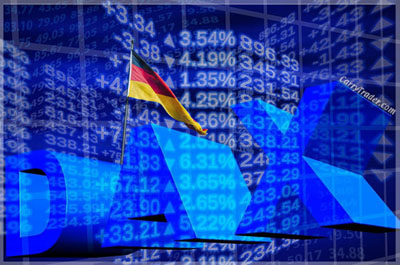Stock Market Indices (+)
The S&P500
The S&P500 or else "Standard and Poor's 500" is a major stock market index tracking the performance of the 500 largest companies listed on stock exchanges in the United States.
Highlights
The index covers approximately 80% of the available US market capitalization. The S&P500 is one of the factors used to forecast the direction of the US economy (Conference Board Leading Economic Index).
- Since its inception, the S&P500 compound annual growth rate has been approximately 9.8% (6.0% after inflation)
- The index weighting method is the free-float capitalization-weighted
- The P/E ratio in early 2024 was x22.1
- The dividend yield in early 2024 was 1.47%
- The stock market capitalization-to-GDP for the US markets is 174.7%
History
In 1923, the Standard Statistics Company began to rate mortgage bonds and developed its first stock market index of 233 US companies. The index was computed weekly. In 1926, they developed a 90-stock index, computed daily. In 1941, the Standard Statistics Company merged with Poor's Publishing to form the Standard & Poor's.
On March 4, 1957, the index was expanded to 500 companies and renamed as 'S&P 500 Stock Composite Index'. In August 1976, The Vanguard Group offered the first mutual fund to retail investors that tracked the S&P500 index. In April 1982, the CME began to trade futures based on the index S&P500. One year later, they began to trade options as well. Starting in 1986, the index value was updated every 15 seconds. In 2005, the S&P500 transitioned to a public float-adjusted capitalization-weighting.
 The British FTSE 100
The British FTSE 100
Introduced in 1984, the FTSE 100 or informally the "Footsie" is an index of the 100 largest companies listed on the London Stock Exchange (LSE).
Highlights
The FTSE 100 comprises the largest 100 qualifying British companies by market capitalization.
- FTSE 100 is Britain’s flagship stock market index
- The five-year average P/E of the FTSE 100 is x14.5
- The average dividend yield of FTSE for the past 25 years is 3.52% (the 25-year high is 7.01% in 2020 and the 25-year low is 1.94% in 2000)
- The total UK's stock market cap over GDP is approximately 102% (the 20-year high is 139.4% and the 20-year low is 69.5%)
 RUSSELL 2000 INDEX (^RUT)
RUSSELL 2000 INDEX (^RUT)
Russell 2000 is a benchmark index for small-cap stocks, mutual funds, and ETFs.
The Index
Russell 2000 is considered an important US stock market index for measuring the performance of small-cap stocks. The index includes around two thousand small-cap companies, and it is a subset of the Russell 3000 index. Note that the Russell 3000 includes more than 95% of all investable US markets.
Russell 2000 at a glance
- The index started in 1984 and consists of about 2,000 small-cap companies
- It is a popular benchmark for mutual funds and ETF investors
 The Japanese NIKKEI 225
The Japanese NIKKEI 225
Introduced in July 1950, the Nikkei 225 is the leading Asian stock market index. The index is comprised of 225 selected common stocks listed on the Tokyo Stock Exchange.
Highlights
The Japanese NIKKEI 225 (日経平均株価, Nikkei heikin kabuka) consists of 225 Japanese domestic stocks listed in the Prime Market of the Tokyo Stock Exchange.
- The Nikkei Stock Average (Nikkei 225) is used around the world as the premier index of the Japanese stock market
- Nikkei 225 is a price-weighted equity index which means the price of the index is an average of the share prices of all the companies listed
- The P/E ratio of the Japanese market in late 2023 was x19.9 (the 3-year average P/E ratio is x18.4)
- The average dividend yield of Nikkei 225 in late 2023 was 3.00%
- The total Japanese stock market cap over GDP is currently approximately 126.7% (the 25-year high is 136.9% in 2021, and the 20-year low is 47.3% in 2002)
History
The NIKKEI 225 began to be calculated on the 9th of July 1950 and retroactively calculated back to 1949. The Nikkei Futures were introduced in 1986 at the Singapore Exchange (SGX).
 The German DAX-40
The German DAX-40
(Deutscher Aktienindex)
Introduced in late 1987, DAX is the most important German stock market index. DAX includes the 40 largest companies listed on the Frankfurt Stock Exchange and it is a blue-chip stock market index. The DAX works as a performance index, meaning that the dividends of the listed companies are accounted as reinvested capital. The performance of the DAX can be seen as a key indicator for the development of the German and the European economy.
Highlights
- DAX (Deutscher Aktienindex) is considered a barometer index for the German economy
- DAX is the successor to the Börsen-Zeitung index, which was founded in 1959
- The base value for the DAX is 1,000, and the base date is 30 December 1987
- The Weighting method for the DAX is the capitalization-weighted
- The German Xetra technology calculates the index after every 1 second since the start of 2006
- The companies of the DAX account for approximately 80% of the total value on the Frankfurt Stock exchange




